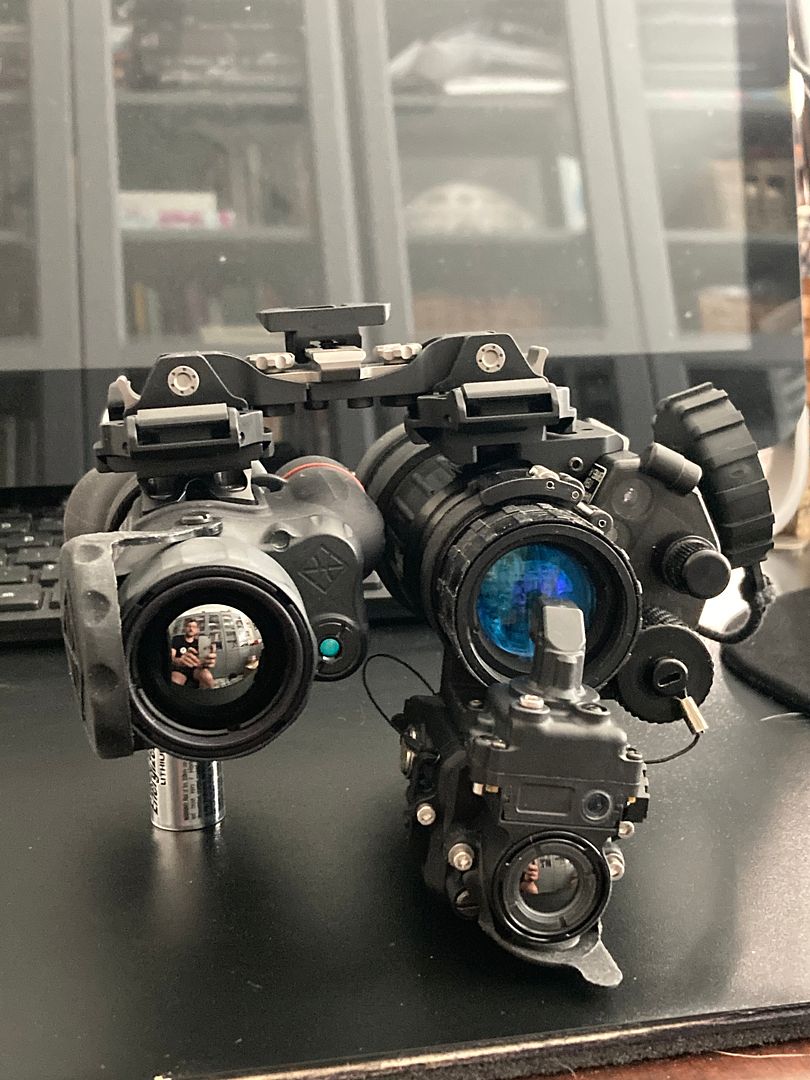I agree with earlier post that OP's two scenarios are very different conditions.
Hunting in the woods, in mountain terrain you are in more of a long range spotting and ID scenario and not facing any threats. You might be best served by a bino IR setup to make movement easier on the terrain, though it can be a personal preference. In this scenario you can probably afford to stop and scan with thermal - be it handheld, head mounted, or weapon mounted and then ID and engage with a good illuminator. Its not tactical, so you have plenty of time to spot, track, id and engage the target. The ranges are longer. I'd be fine with a COTI here, but the NOX will give you a bit better reach and resolution. A iRay MH25 would be a significant step up over either but obviously more dollars.
Low light urban SHTF is different. You need to move a lot more, but the terrain is easier to navigate in some ways. Positive ID is a real issue - you can't just point your gun at every thermal blob and pull the trigger like you are hunting hogs. Most urban encounters are innocents.
You also need to seriously consider the use of white light by enemies as any clown with a flashlight and pistol can light you up and flood your IR. Imagine turning a corner or opening a door and being hit by a few hundred lumens of white light. Can you flip a monocular up and engage fast enough with your own white light/red dot? Probably not...so that means running with one tube flipped up a lot of the time so you can engage with your own white light. Also you want to keep in the shadows (even a dark city has some light) so sometimes its best to have one eye in the clear to gauge ambient light.
In a truly urban environment where I don't have a bunch of NV equipped buddies covering my back, I would probably rather have the COTI, and I might even run just one monocular and leave my dominant eye free to engage with white light and red dot. The reason is that you have a high probability of moving between mixed lighting conditions or getting lit up. The environment is far more fluid. Even high end thermal does not have the capability to do a positive ID (innocent teenager or threat?) so that's up to a IR laser/illuminator. The COTI is "good enough" to find people at the short ranges you are likely to engage and then them light them up with your illuminator to positively ID. A NOX or similar might be useful outside, but again we're typically not engaging past 50 yards due to the positive ID requirements.
Indoors, the ranges and times are so short the thermal is not a huge advantage. Typically you are running an wide IR illuminator/laser on full time in this scenario to give you enough ambient IR, and I would have one tube flipped up in any case because of the white light threat mentioned above. Again I would rather have the COTI so I can run it on one monocular. The main thermal use case here is identifying signs of recent activity (warm blankets, pots, etc...) or perhaps the guy peeking around the corner at the end of the hall.




